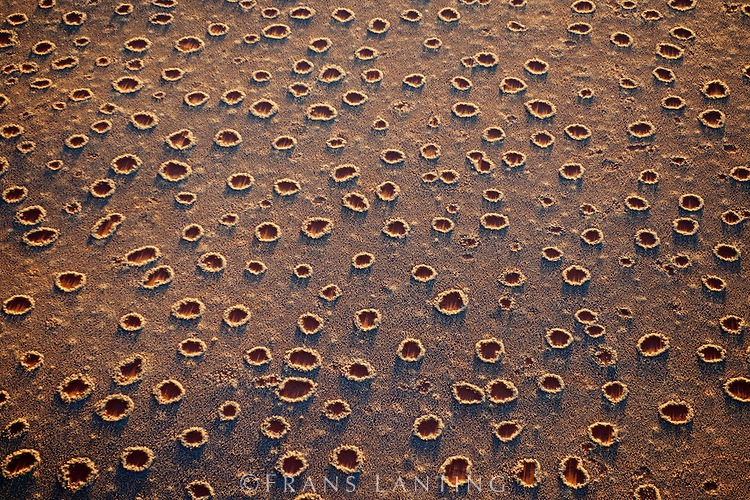In the grasslands of southern Africa, there are thousands of circular barren patches of land called ‘fairy circles’. They grow between 2 meters to 15 meters in diameter, and occur amidst grassy vegetation, specifically in Namibia. But they are also present in Angola and South Africa.
The circles are found in a band about 160 km inland, stretching south from Angola for about 2,400 km. Located in a remote and inhospitable stretch of land that is over a hundred miles from the nearest village. The circles have been studied since they were reported on in 1971, but no conclusive evidence of their cause has been found.
According to a local Himba residents, the circles are caused by a dragon that lives beneath the earth’s crust whose fiery breath bubbles to the surface, burning the vegetation into near-perfect circles. Others have postulated that the phenomenon is caused by ants, termites, radioactive soil or toxins secreted by the Damara euphorbia, a poisonous endemic plant.

New research may now have yielded a more credible explanation for the fairy circles. A German biology professor Norbert Juergens of the University of Hamburg, has discovered that the intriguing phenomenon is actually the result of sophisticated ecological engineering by the sand termite Psammotermes allocerus.
The sand termite was found in 80-100% of the circles, and in 100% of newly formed circles and was the only insect to live across the range of the phenomenon. The termites create the fairy circle by consuming vegetation, and burrowing in the soil to create the ring. The barren circle allows water to percolate down through sandy soil and accumulate underground, allowing the soil to remain moist even under the driest conditions. Grasses grow on the edges of the circle due to the stored underground water, which the termites will feed upon and slowly increase the size of the circle. Because of this behavior, the sand termites cultivate their own sources of food and water, creating a local ecosystem in a manner similar to the common beaver.
Walter R. Tschinkel, a biologist at Florida State University who also researched the fairy circles, challenged Juergens’s findings saying that Juergens "has made the common scientific error of confusing correlation (even very strong correlation) with causation." Previously, Tschinkel had searched for harvester termites without success.
Juergens responded by saying that Dr. Tschinkel was “looking for the wrong termites”. Sand termites are different from harvester termites and live deep beneath the circle, do not create mounds or nests above ground and move in such a way as to leave no tracks in the sand.
The debate has been ongoing for some time as to the cause of the formation of the circles, and it’s likely to go on in future. The Himba people are, however, unconcerned. To them, there is nothing to explain: the circles are “footprints of the gods.”

































